
Greg K sent us this photo of a special order pack MR available in Japan.
When it comes to equipping the men and women who protect our liberty and security, only the best will do. From 19 to 22 November 2019, Rheinmetall will be on hand at the MILIPOL international security show in Paris at Stand 5 K 026, displaying a selection of its extensive portfolio of products for law enforcement agencies and security forces.
The Survivor R protected special operations vehicle
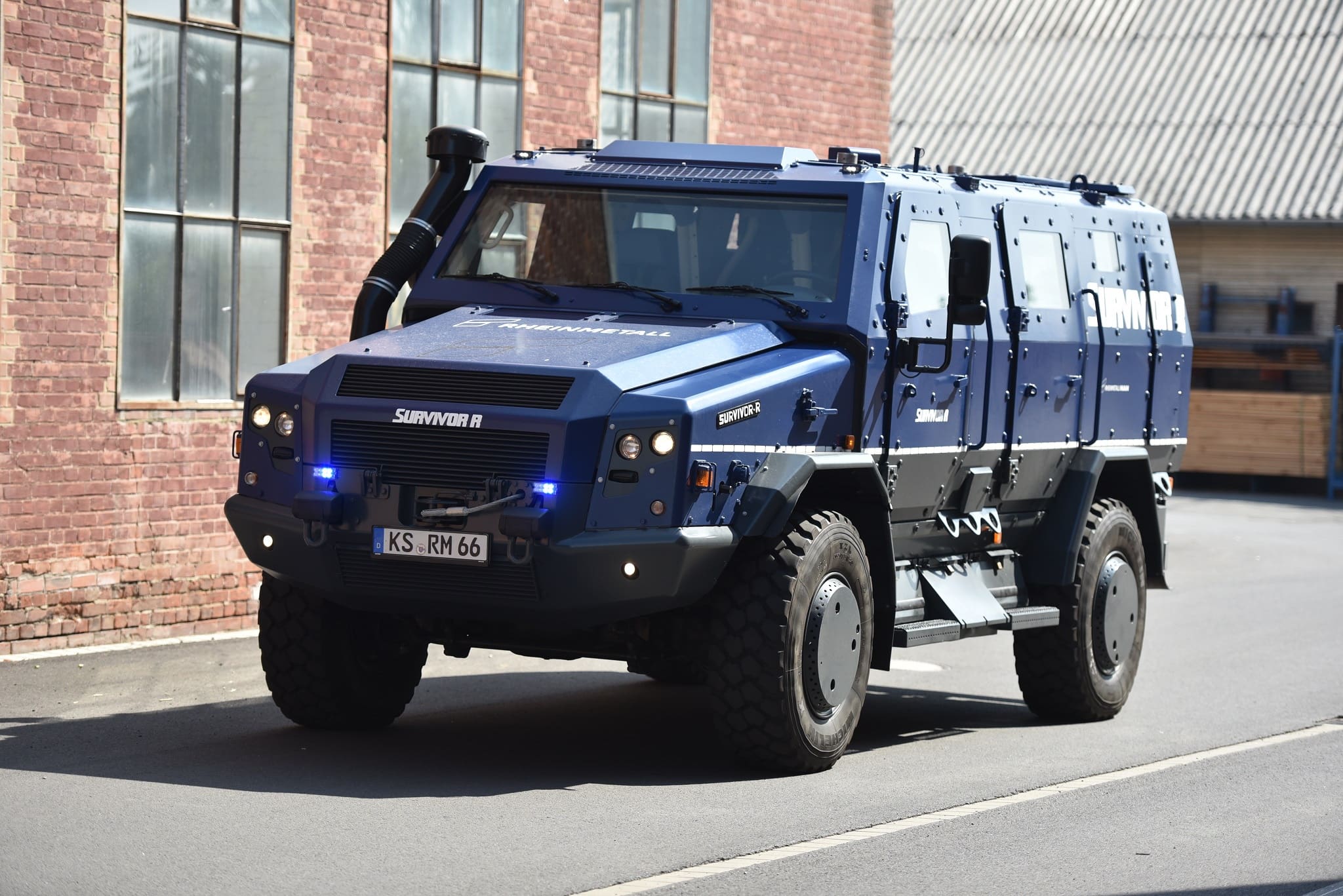
The Survivor R epitomizes Rheinmetall’s commitment to the twin imperatives of security and mobility. It is extremely well suited for police special operations. In Germany, state-level police forces in Berlin, North Rhine Westphalia and Saxony have already opted to equip their SWAT teams with the Survivor R. The Survivor R is now in the running to become the standard special operations vehicle for Germany’s federal and state police agencies.
Developed in cooperation with special vehicle maker Achleitner and based on a high-performance 4×4 MAN truck chassis, the Survivor R is fitted with a steel armour cab. Capable of reaching speeds of over 100 km/h, the vehicle combines tried-and-tested automotive technology from major production runs with the latest force protection concepts from Rheinmetall.
Systematic use of off-the-shelf civilian parts and serially produced military components make the vehicle an affordable option, while users can rely on Rheinmetall MAN’s global service network for maintenance and repairs. This makes the Survivor R a cost-effective, easy-to-maintain vehicle platform with low lifecycle costs and a high level of operational readiness.
An armoured monocoque cab with add-on protection elements can be individually and discreetly modified to meet evolving threat situations, while a ventilation system for filtering out nuclear, biological and chemical agents is standard equipment in every Survivor R vehicle. Well-lit and ergonomically designed, the interior is spacious enough to seat up to eleven personnel with their personal equipment as well as extensive C4I and communications equipment. This versatile vehicle can also be equipped with remotely operated weapon stations. At MILPOL 2019, Rheinmetall is showcasing a Survivor R fitted with a Fieldranger weapon station. This variant is designed for protecting airports, for instance, as well as for operations against terrorists employing military tactics and equipment.
Special effects technology
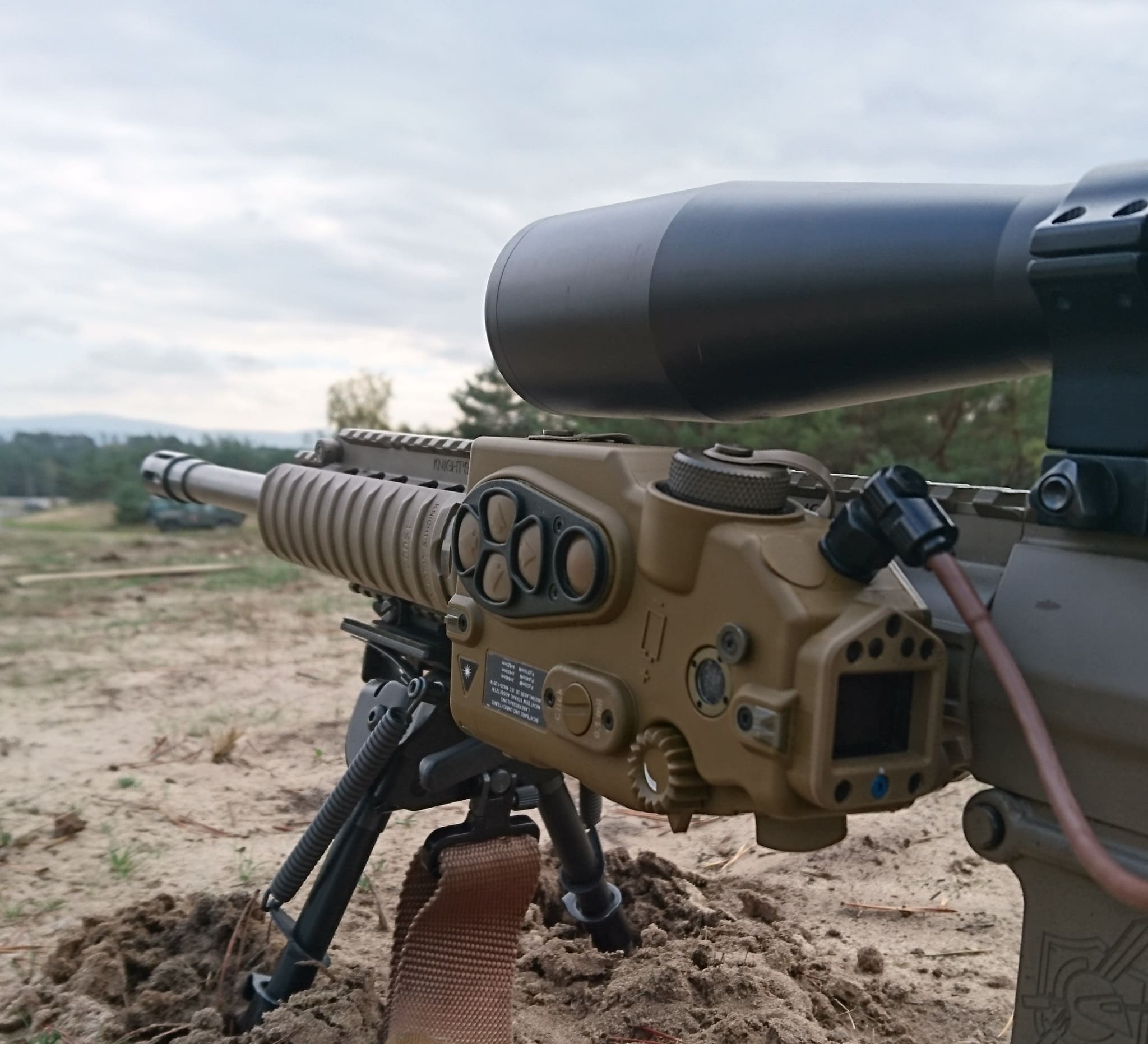
Rheinmetall offers a comprehensive array of pyrotechnic products. When it comes to SWAT team-type operations, the Group’s portfolio of multi-bang grenades and improved-performance flash-bang grenades with bottom-top venting (BTV) technology offers the perfect solution. They are extremely safe to handle, highly precise and very reliable.
Rheinmetall has developed a wide assortment of flares for signalling and for illuminating the area of operations at night. These include the handheld Mithras, with ranges of 300, 600 and 1,000 metres, with versions available for the visible and infrared sector.
Rheinmetall’s new 60mm mortar for infantry and special forces
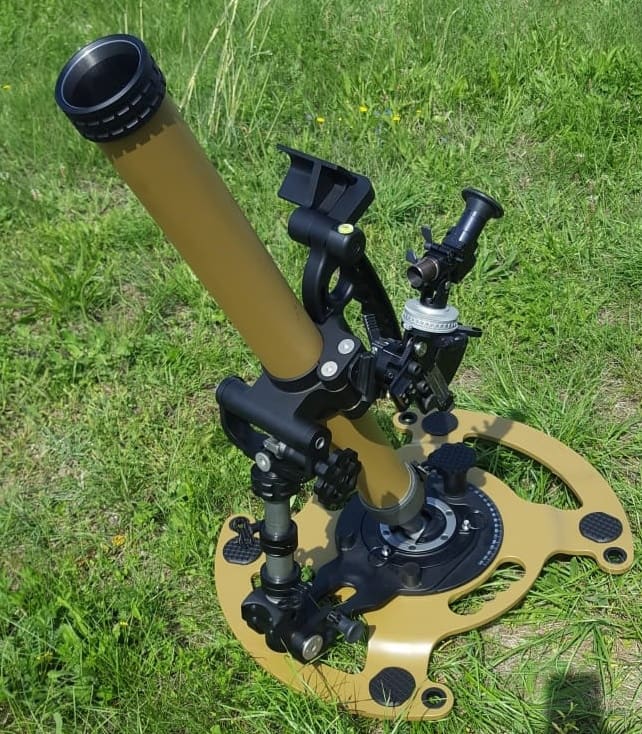
Rheinmetall has developed a new 60mm mortar for infantry and special forces. The RSG60 features innovative design and engineering characteristics which make this indirect fire system very light and easy to handle. A few quick manual adjustments turn the 15.8 kg standard infantry version into a commando mortar weighing just 6.8 kg, with no need for tools. This makes the RSG60 a two-in-one solution. Depending on the ammunition and charges, the standard version can attain ranges of up 3,200 metres. Equipped with a thirty centimetre-longer barrel, the range increases by around 500 metres. The commando variant of the RSG60 has a range of around 2,000 metres.
40mm system family
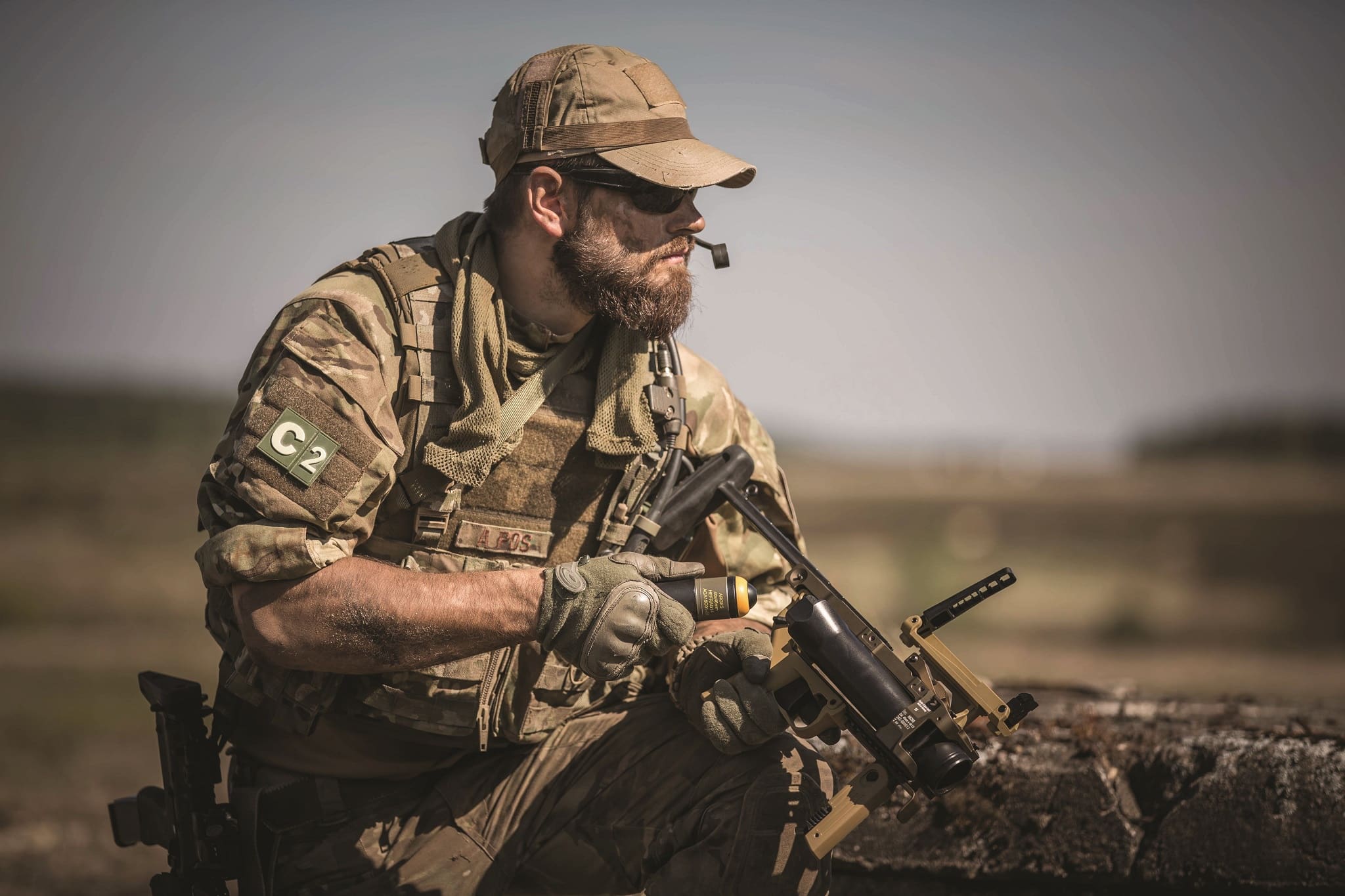
As a leading maker of munitions, Rheinmetall’s extensive portfolio of 40mm products covers multiple operational scenarios. These range from distraction rounds and marking charges as well as non-lethal impulse ammunition and highly effective special solutions for methods of entry, or MOE, including airburst technology.
Moreover, as a top maker of military systems and equipment, Rheinmetall offers a wide variety of relevant weapon concepts. These include the Magazine-Fed Grenade Launcher, or MFGL, which features integrated hydraulic shock absorption. The Group’s fire control and aiming devices – including the Vingmate family – make Rheinmetall a one-stop shop for 40mm system technology.
Laser light modules
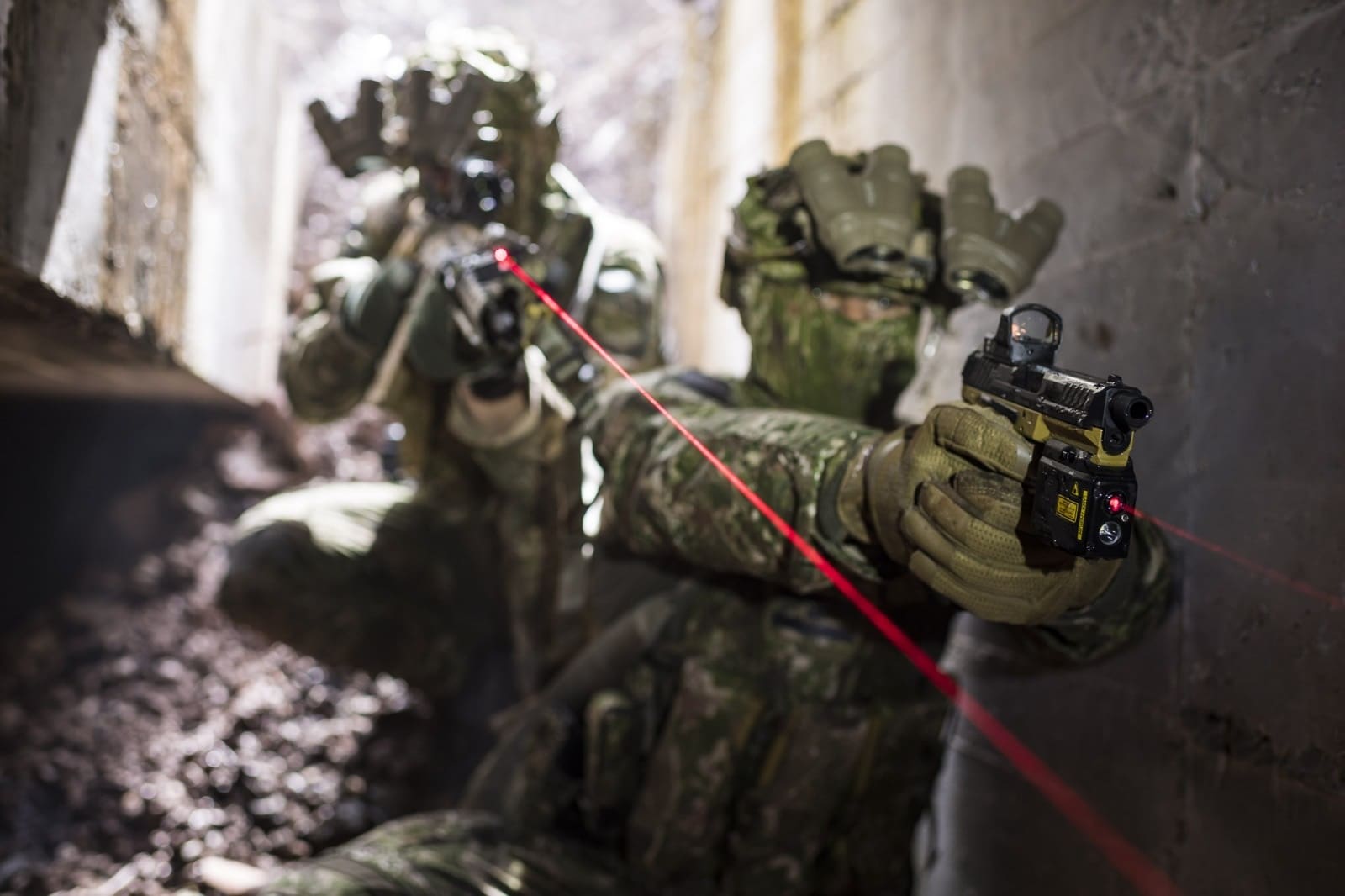
Rheinmetall has recently added further modular components to its “VarioRay” family of laser light modules. The new Variable Tactical Aiming Laser (VTAL) laser is extremely robust and compact. The system is specially designed for today’s shorter assault rifles. VTAL is compatible with all standard night observation devices. Furthermore, the system can be coupled with other tactical weapon lights such as Rheinmetall’s modular Lumenator weapon light and operated using a combined two-button cable switch. The new products are key components for boosting the operational effectiveness of modern small arms. Moreover, visitors to the Rheinmetall stand at MILIPOL 2019 can learn about other members of the VarioRay family as well as the Group’s TAC-Ray Ballistic sniper build-on module with integrated ballistic computer.
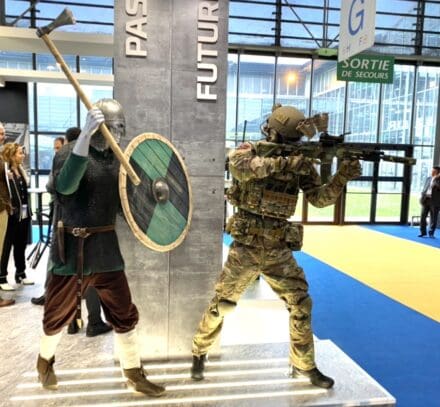
NFM has launched an entirely new helmet at Milipol. Although it incorporates numerous innovations, it remains compatible with common ear pro systems and offers a lightweight NVG Shroud.
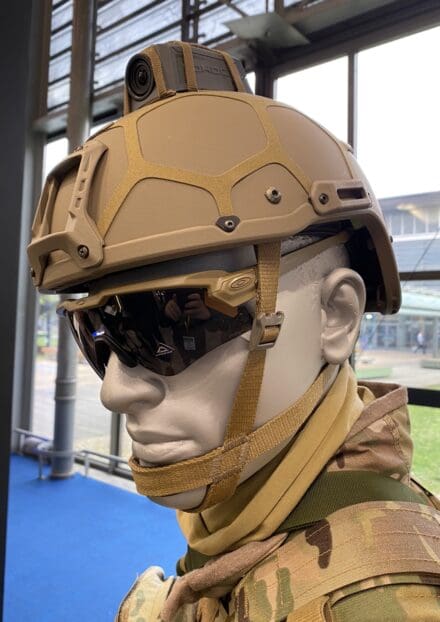
Developed in conjunction with Final Forge, the goal was to take as much weight off of the helmet as possible. One of the most pronounched things you will notice about Hjelm is that there are no continuous rails attached to the helmet.
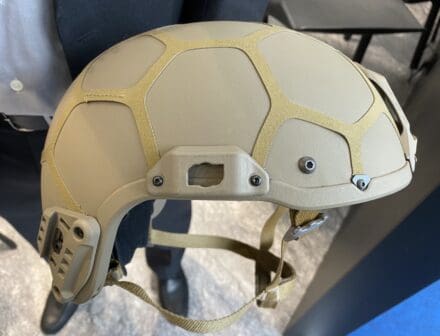
Instead, they’ve introduced an Edgemount Attachment System which allows the user to attach items only where necessary, much like M-LOK does for weapons. In fact, they even have an M-LOK adapter, along with others. The reverse side of the Edgemount Attachment System also offers a guide for rounding cables on the inside of the helmet. The grid-like pattern on the shell is called Helmet Attachment System Pattern and replaces the Velcro used on my other helmets. HASP is lighter than Velcro and won’t wear out from adds ing and removing items. Instead, this web of high strength composites is used as a base to attach accessories, including camouflage materials.
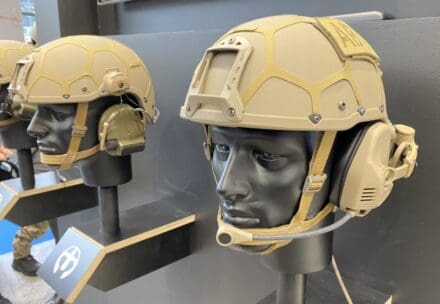
Naturally, they’ve also reduced weight on the shell itself, but you’ll have to contact NFM for exact ballistic capabilities. NFM also improved fit by introducing four different sizes and two different widths to better accommodate different head shapes.
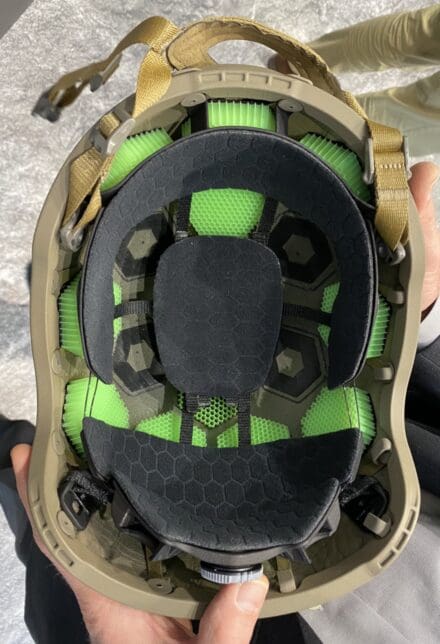
The Skullplate Liner system improves breathability due to its lower profile suspension and also provides better impact protection during rotational impacts thanks to Koroyd welded tubes which serve as crumple zones.
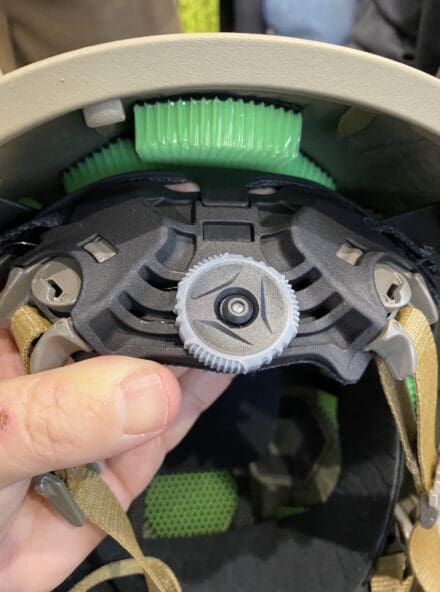
The new chinstrap actually buckled at the rear, just above the nape of the neck, on either side of the adjustment dial. This moves buckled away from the chin meaning the helmet can be worn with masks whether the strap is worn on or below the chin.
Will Offer Their Semi-Automatic Weapons TAVOR Family, GALIL ACE Family and UZI Pro To Europe’s Hunting & Sport Shooting Fans
November 19, 2019 – IWI Israel Weapon Industries (IWI), SK Group Member – a leader in the production of combat-proven small arms for law enforcement agencies, governments and armies worldwide, as well as commercial markets in the US ? announces its expansion, reflected in the marketing of its semi-automatic weapons to the European commercial markets of sport-shooting and hunting. The weapons to be marketed include the TAVOR family, the GALIL ACE family, and the UZI Pro, all of which will be soon displayed in the next-coming Milipol Paris and Defense & Security Thailand trade shows.
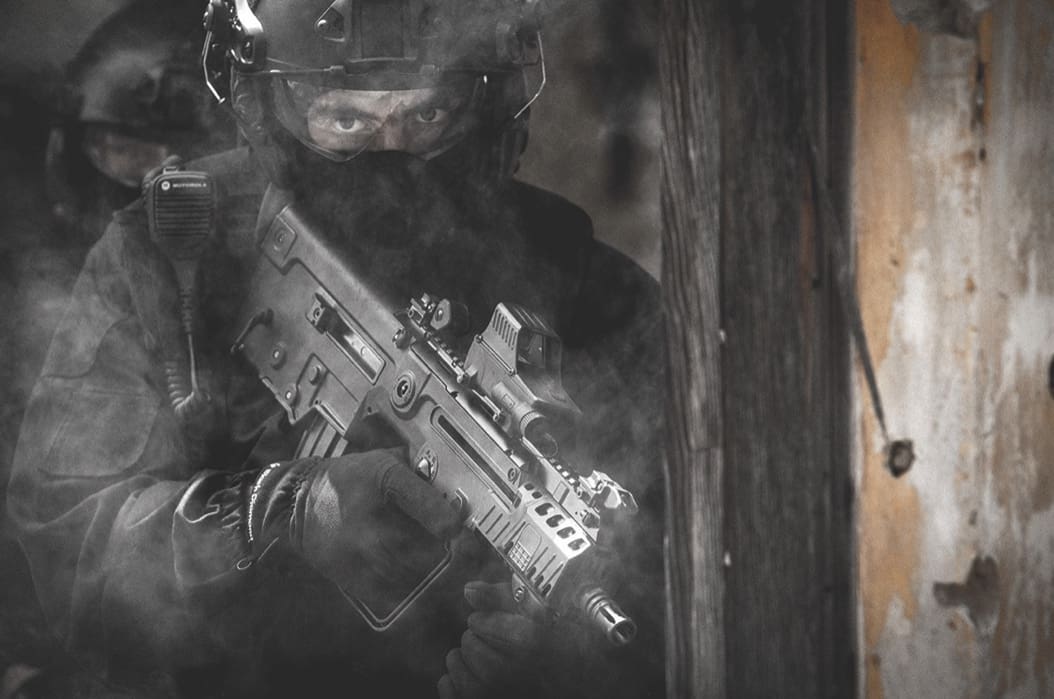
Ronen Hamudot, Corporate VP Marketing and Sales, SK Group, explains: “In light of IWI’s success in marketing these weapons to the US commercial market, the company has decided to expand its reach towards the commercial market in Europe as well”
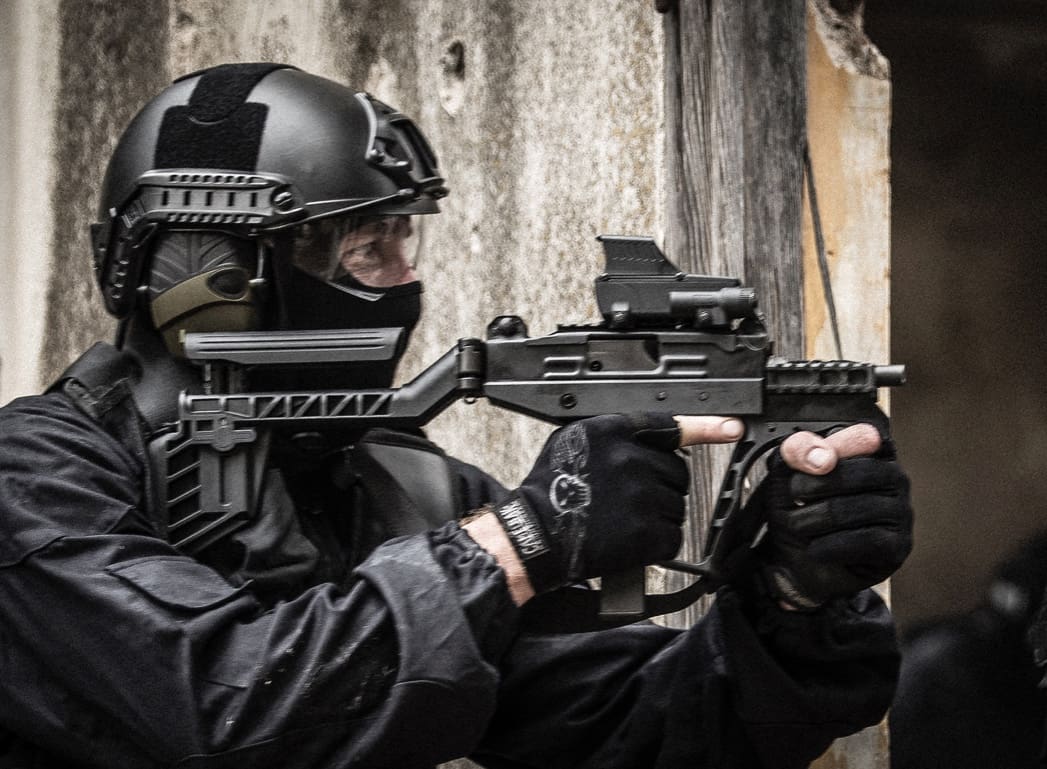
IWI’s offering to the European commercial market has so far focused mainly on pistols for personal use, such as the popular JERICHO and MASADA.
According to Hamudot “We greatly appreciate the distinguished history of sport shooting and hunting in Europe, and believe that our high quality solutions will be very successful in this market and will meet the high demands.
Among these weapons is the new member to the TAVOR family – TAVOR TS12 shotgun – which has so far been offered only to the US market and will now be showcased in Europe for the first time.
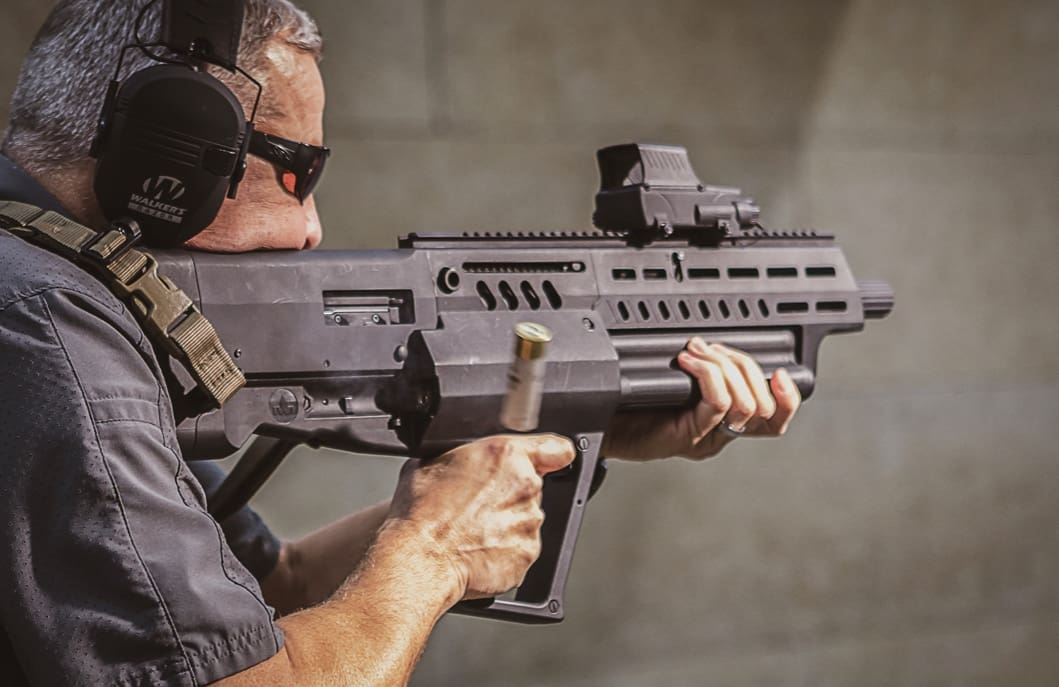
The TAVOR TS12 shotgun is a gas regulated bullpup shotgun. With an innovative design it feeds from one of three individual magazines which can each hold four 3inch or five 2¾ inch shotgun shells. This results in a potential overall capacity from all three individual magazines of 15 rounds plus one additional round in the chamber. The TS12 has a unique feature that automatically loads a round in the chamber once the subsequent loaded magazine is rotated into position. It can be fed and unloaded from either side. Additional features of the TS12 include four sling attachment points, M-LOK compatible rails, a continuous Picatinny rail on top, Benelli/Beretta choke tube compatibility, and the reliability expected of all IWI products. Although the TS12 has an 18.5 inch barrel, the overall length is still only 28.34 inches.
Both France and Germany have adopted new Gore-Tex rainsuits, with France picking up two different variants.
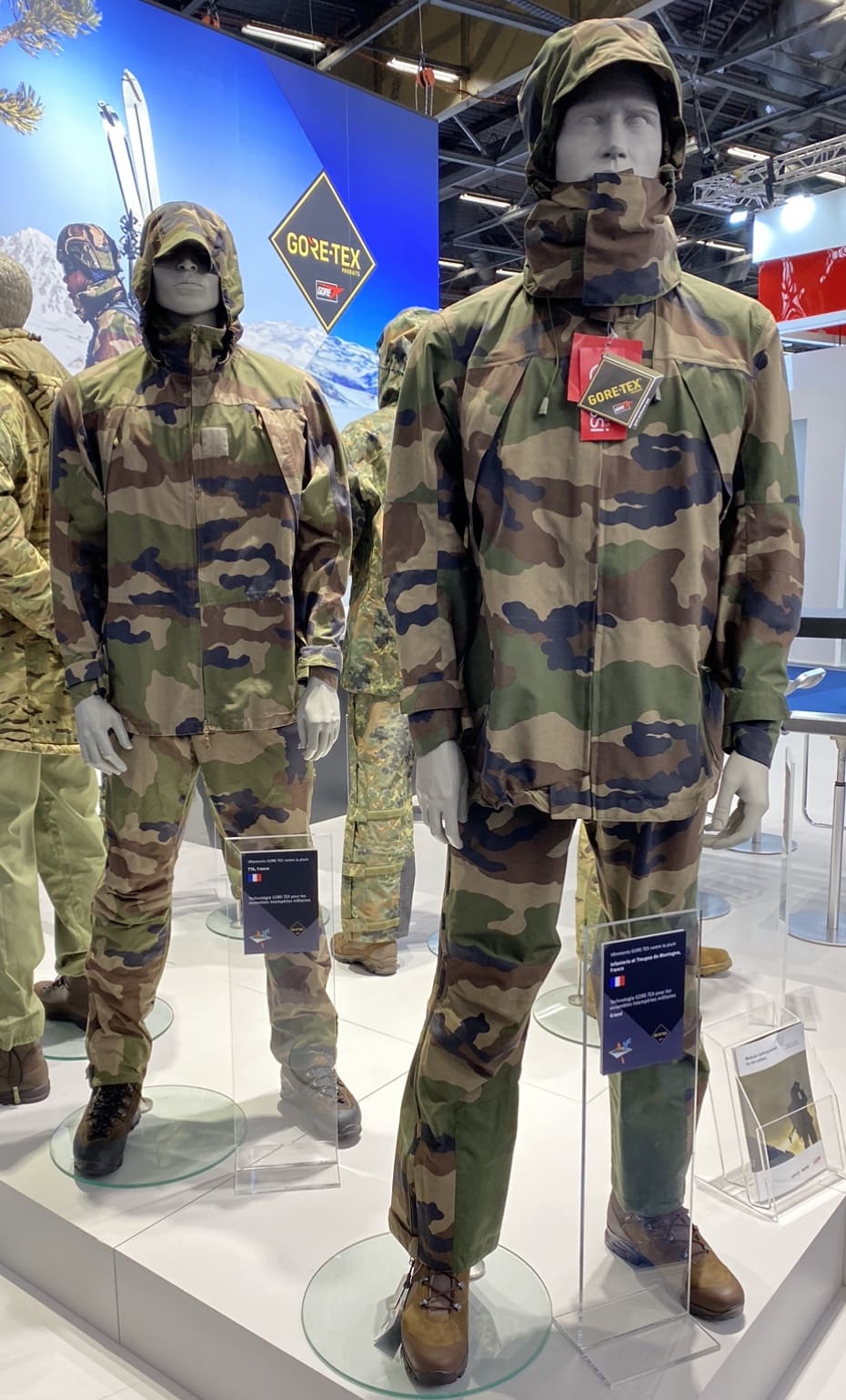
To the front is the ensemble initially developed for use by French Mountain Troops but now rolling out for the entire Infantry. Manufactured from a 3-layer Gore laminate, it features reinforcements on the trousers as well as an oversized hood to accommodate both a climbing helmet as well as the Felin helmet. Interestingly, they used a 2-layer laminate in the hood to make it drape better.
The uniform at the rear is made from a 2-layer Gore laminate and will be issued across the entire French military to non-Infantry and non-SOF.
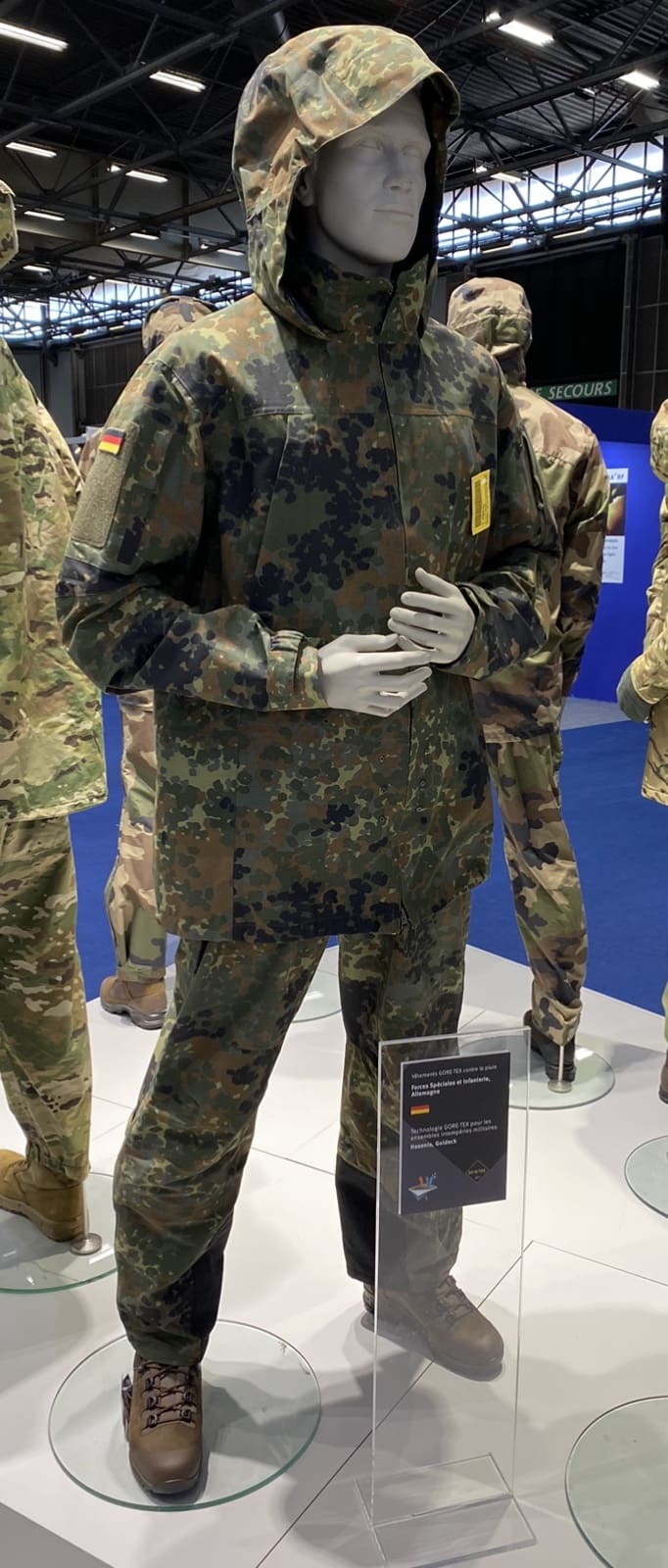
This is Germany’s new wet weather suit for use by all the Infantry and SOF. Deemed a 2-layer plus, the laminate features a durable coating on the inside.
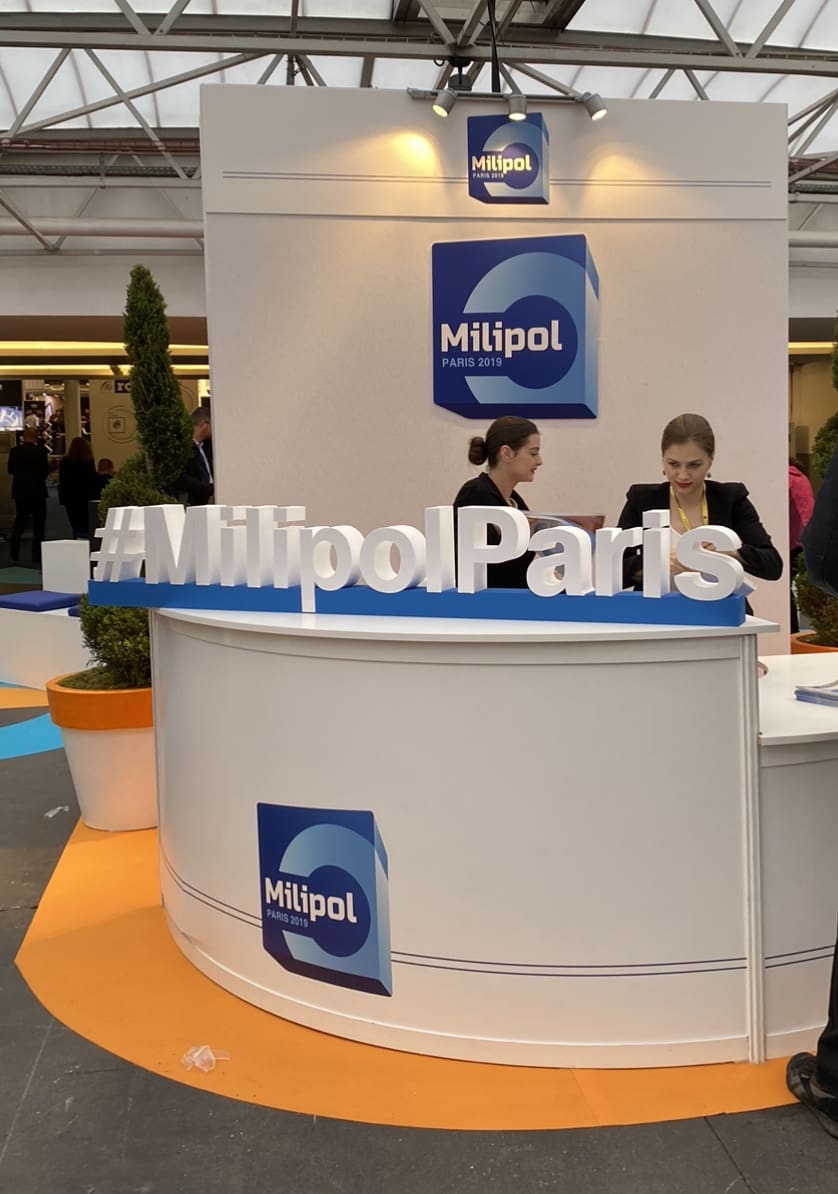
We’ve arrived in Paris and the biannual 2020 Milipol Expo has begun.
RESEARCH TRIANGLE PARK, N.C. — Synthetic biologists working on a U.S. Army project have developed a process that could lead to a new class of synthetic polymers that may create new high-performance materials and therapeutics for Soldiers.
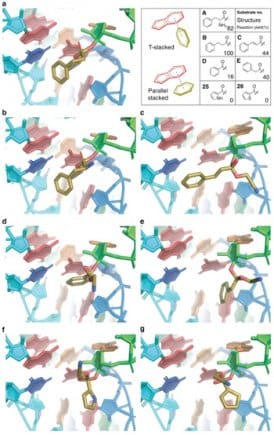
Nature Communications published research conducted by Army-funded researchers at Northwestern University, who developed a set of design rules to guide how ribosomes, a cell structure that makes protein, can incorporate new kinds of monomers, which can be bonded with identical molecules to form polymers.
“These findings are an exciting step forward to achieving sequence-defined synthetic polymers, which has been a grand challenge in the field of polymer chemistry,” said Dr. Dawanne Poree, program manager, polymer chemistry at the Army Research Office. “The ability to harness and adapt cellular machinery to produce non-biological polymers would, in essence, bring synthetic materials into the realm of biological functions. This could render advanced, high-performance materials such as nanoelectronics, self-healing materials, and other materials of interest for the Army.”
Biological polymers such as DNA, have precise building block sequences that provide for a variety of advanced functions such as information storage and self-replication. This project looked at how to re-engineer biological machinery to allow it to work with non-biological building blocks that would offer a route to creating synthetic polymers with the precision of biology.
“These new synthetic polymers may enable the development of advanced personal protective gear, sophisticated electronics, fuel cells, advanced solar cells and nanofabrication, which are all key to the protection and performance of Soldiers,” Poree said.
“We set out to expand the range of ribosomal monomers for protein synthesis to enable new directions in biomanufacturing,” said Michael Jewett, the Charles Deering McCormick Professor of Teaching Excellence, professor of chemical and biological engineering, and director of the Center for Synthetic Biology at Northwestern’s McCormick School of Engineering. “What’s so exciting is that we learned the ribosome can accommodate more kinds of monomers than we expected, which sets the stage for using the ribosome as a general machine to create classes of materials and medicines that haven’t been synthesized before.”
Recombinant protein production by the ribosome has transformed the lives of millions of people through the synthesis of biopharmaceuticals, like insulin, and industrial enzymes that are used in laundry detergents. In nature, however, the ribosome only incorporates natural amino acid monomers into protein polymers.
To expand the repertoire of monomers used by the ribosome, Jewett’s team set out to identify design rules for linking monomers to Transfer ribonucleic acid, known as tRNAs. That is because getting the ribosome to use a new monomer is not as simple as introducing a new monomer to the ribosome. The monomers must be attached to tRNAs, which are the molecules that carry them into the ribosome. Many current processes for attaching monomers to tRNAs are difficult and time-consuming, but a relatively new process called flexizyme enables easier and more flexible attachment of monomers.
To develop the design rules for using flexizyme, the researchers created 37 monomers that were new to the ribosome from a diverse repertoire of scaffolds. Then, they showed that the monomers that could be attached to tRNAs could be used to make tens of new peptide hybrids. Finally, they validated their design rules by predictably guiding the search for even more new monomers.
“With the new design rules, we show that we can avoid the trial-and-error approaches that have been historically associated with developing new monomers for use by the ribosome,” Jewett said.
These new design rules should accelerate the pace in which researchers can incorporate new monomers, which ultimately will lead to new bioproducts synthesized by the ribosome. For example, materials made of protease-resistant monomers could lead to antimicrobial drugs that combat rising antibiotic resistance.
The research is part of the Department of Defense’s Multidisciplinary University Research Initiatives program, supported by ARO, in which Jewett is working with researchers from three other universities to reengineer the ribosome as a biological catalyst to make novel chemical polymers. ARO is an element of the U.S. Army Combat Capabilities Development Command’s Army Research Laboratory.
“It’s amazing that the ribosome can accommodate the breadth of monomers we showed,” Jewett said. “That’s really encouraging for future efforts to repurpose ribosomes.”
Researchers at the University of Texas at Austin are working on a similar technology to develop adhesion and adaptive and responsive materials as part of a cooperative agreement with ARL and Army Futures Command.
Story by U.S. Army CCDC Army Research Laboratory Public Affairs
Photo courtesy of Northwestern University
First off, Inforce is moving back to aluminum for all of their lights. For about a decade, they had gone to polymer, but starting with these two new weapon lights, the 9ZERO and FOURTY5, the bodies will be manufactured from aluminum. Specifically, they are 6061 aluminum Type III hard coat anodized.
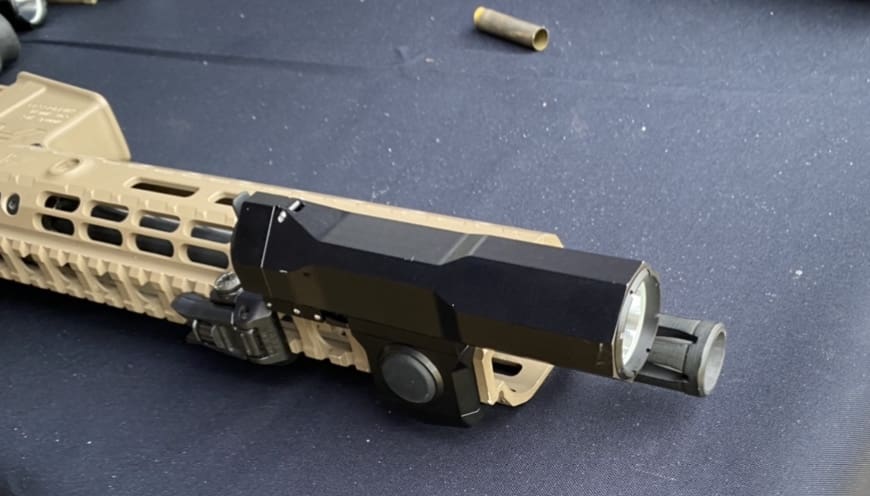
The construction of the two lights is similar with the 9ZERO a 90 deg offset and the FOURTY5 a 45 deg offset.
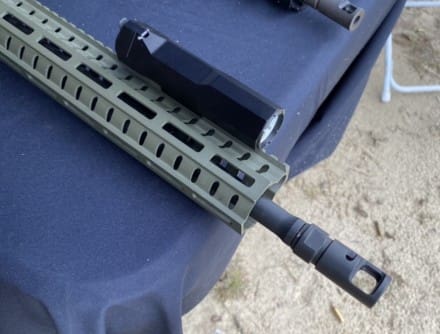
Additionally, they feature an Aluminum cased activation button as well as a magnetic tape switch.
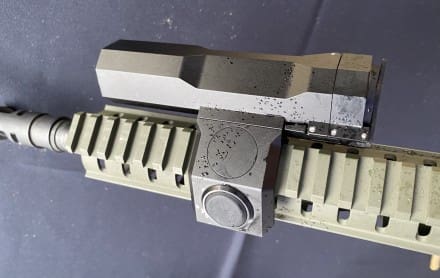
Relying on a 18650 or 123A battery, the light will offer 1200 lumens for up to 90 minutes. Final specs will probably be higher, but that’s where they have measured so far.
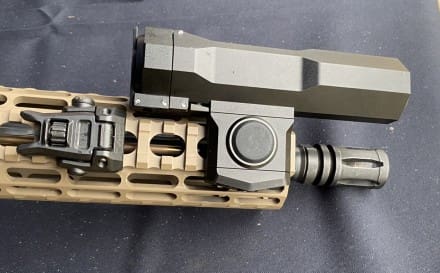
The 9ZERO will begin shipping in January and will run $219 with the FOURTY5 later in the Spring at $239.